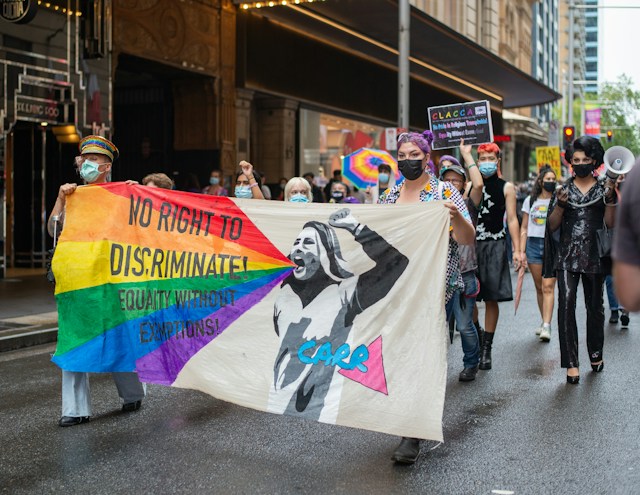How are sports evolving to be more inclusive of?

In a world where inclusion and diversity are becoming more essential parts of life, the sports industry has been striving to adapt. Specifically, there has been a rising awareness about the need to accommodate lesbian, gay, bisexual, transgender, and queer (LGBTQ+) athletes better. This article will delve into how sports are evolving in terms of gender identity inclusion and the participation of LGBTQ+ people, providing a snapshot of the current landscape and the changes underway.
Breaking the ice: LGBTQ+ inclusion in university sports
University sports have often been a stepping stone for athletes, leading them towards their professional careers. However, for many LGBTQ+ athletes, it has been a challenging journey. Many universities are now implementing inclusive policies to facilitate their participation and protection, leading to significant changes in university sports.
A lire en complément : How can parents best support their children in competitive sports?
Universities are at the forefront of creating a safe and inclusive environment for LGBTQ+ athletes. They are doing so by implementing policies that protect athletes against discrimination based on sexual orientation or gender identity. A trend has been observed where more universities are bringing in comprehensive non-discrimination policies, inclusivity training for staff and teams, and providing resources for LGBTQ+ athletes.
Furthermore, they are making efforts to create an atmosphere that encourages athletes to express their identity openly. This involves educational programs that aim to break down stereotypes and nurture acceptance among team members. There have been instances where universities have organized Pride games, promoting acceptance and visibility for LGBTQ+ athletes.
Lire également : The thrill of victory: iconic moments in sports history
Women’s sports: A battleground for transgender policies
Women’s sports have been somewhat of a battleground when it comes to including transgender athletes. The main issue revolves around whether transgender women, who were assigned male at birth, have an unfair advantage over cisgender women. This has led to a heated debate and the formulation of new policies and rules.
Organizations such as the International Olympic Committee (IOC) have implemented policies where transgender women can compete in women’s sports, provided they meet certain requirements related to hormone levels. Other organizations, including NCAA in the United States, have similar policies, although they vary in their specifics.
This evolution towards accepting transgender athletes in women’s sports is seen as significant progress. However, it remains a contentious issue, with some arguing that these policies still don’t do enough to ensure fair competition.
The role of male athletes in promoting LGBTQ+ inclusivity
Male athletes, particularly those in major sports leagues, play a significant role in promoting LGBTQ+ inclusivity. Their attitudes and actions can have a profound impact on the perception and acceptance of LGBTQ+ athletes in sports.
There have been instances where high-profile male athletes have come out as gay, leading to a shift in the traditionally macho culture of sports. Their courage in expressing their sexual orientation openly has been a beacon for younger athletes struggling with their identity.
Moreover, many straight athletes are becoming allies, supporting their LGBTQ+ teammates and speaking up against homophobia. These actions are crucial in breaking down barriers and making sports more inclusive for everyone, regardless of their sexual orientation or gender identity.
Changing the game: New sports policies for greater inclusivity
As sports evolve to be more inclusive, governing bodies are revising their policies. The focus is on ensuring that sports are not just about competition, but also about respect, fairness, and human rights.
Several sports organizations have made amendments to their policies to accommodate athletes’ preferred gender identity. Such changes have been made by the IOC and other major sports associations. Athletes are now allowed to compete under the gender that they identify with, instead of the sex they were assigned at birth.
Moreover, these organizations are showing zero tolerance for discrimination and harassment based on sexual orientation or gender identity. Such advancements in sports policies are setting new benchmarks for inclusion, ensuring that sports are a safe space for LGBTQ+ athletes.
In conclusion, the sports industry is taking strides towards being more inclusive of LGBTQ+ athletes. While there is still a long way to go, the concerted efforts by universities, sports organizations, and athletes themselves are making a difference. The journey towards complete inclusivity is a marathon, not a sprint, but with every step, the finish line draws a bit closer.
Leading by example: Professional sports leagues and LGBTQ+ inclusivity
Professional sports leagues have a major role to play in promoting LGBTQ+ inclusivity. Their global reach and popularity mean that their policies and actions can influence a vast audience. Over the years, these leagues have seen significant changes in their approach towards the inclusion of LGBTQ+ athletes.
One of the most notable changes has been the growing visibility of LGBTQ+ athletes. More athletes are coming out, breaking the stereotypes associated with the macho culture of sports. This visibility is key to fostering acceptance and inclusivity. For example, in recent years, we have seen athletes like Michael Sam in the NFL and Jason Collins in the NBA come out as gay, making history in their respective sports.
Furthermore, sports leagues are taking steps to ensure that their policies are inclusive of all athletes, regardless of their sexual orientation or gender identity. The NBA, for example, updated its non-discrimination policy to include gender identity and expression. The NFL has also made progress, introducing training programs to educate players and staff about LGBTQ+ issues.
Additionally, many leagues are celebrating Pride month, showing their support for the LGBTQ+ community. Events like these not only help in promoting inclusivity but also provide a platform for LGBTQ+ athletes to be seen and heard. However, these changes, while positive, are just the start, and more proactive measures are needed to ensure genuine inclusivity.
Conclusion: The ongoing journey towards LGBTQ+ inclusivity in sports
The sports world is indeed changing, becoming more sensitive and more inclusive of LGBTQ+ athletes. This evolution is being driven by the increased awareness about the need for inclusivity, the courage of LGBTQ+ athletes, and the proactive measures taken by universities, sports organizations, and athletes.
The inclusion of transgender people in sports is a significant step forward. Despite the ongoing debate over transgender athletes’ participation, especially in women’s sport, progress is being made. Policies are being revised to accommodate the preferred gender identity of athletes and to ensure their right to participate in sports.
However, it’s important to note that the journey towards complete LGBTQ+ inclusivity in sports is not over. There are still hurdles to overcome, including overcoming stereotypes, combating discrimination, and ensuring equal opportunities for all athletes.
Inclusivity is not just about having policies in place; it’s about changing attitudes and creating an environment where everyone feels welcome and valued. Athletes, regardless of their sexual orientation or gender identity, should have the opportunity to participate in sport physical activities without fear of discrimination or prejudice.
In the end, the goal is to make sports a safe and inclusive space for all, where respect and fair play are the norm, not the exception. This goal may seem lofty, but with concerted efforts and time, it is certainly achievable. The evolution happening in the world of sports is promising and a testament to the power of sports to foster positive change. The hope is that in the future, all athletes, including those from the LGBTQ+ community, can compete openly and proudly, without fear of discrimination or prejudice.
As we continue to strive for greater inclusivity, it’s important to remember that it’s not just about tolerance, but rather full acceptance and equal opportunities for all athletes, regardless of their sexual orientation or gender identity.
